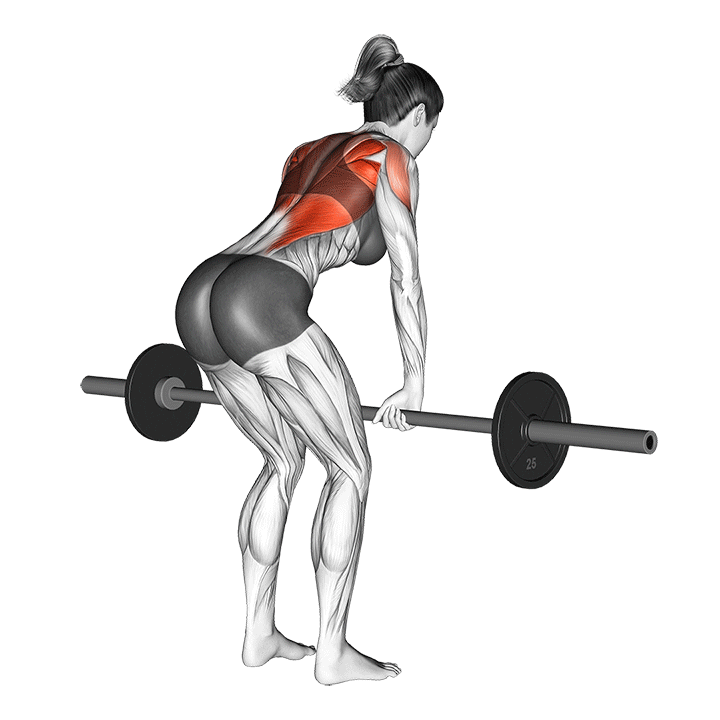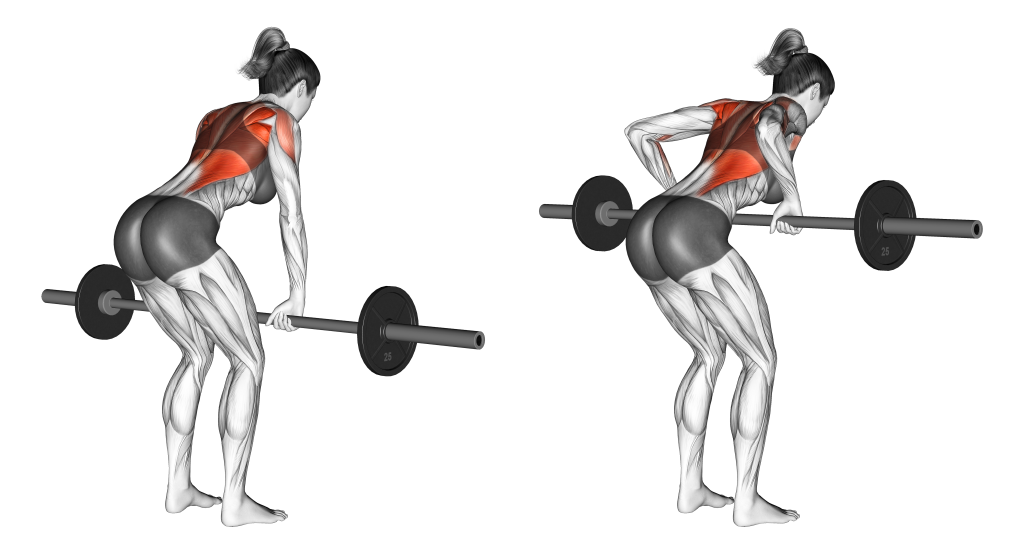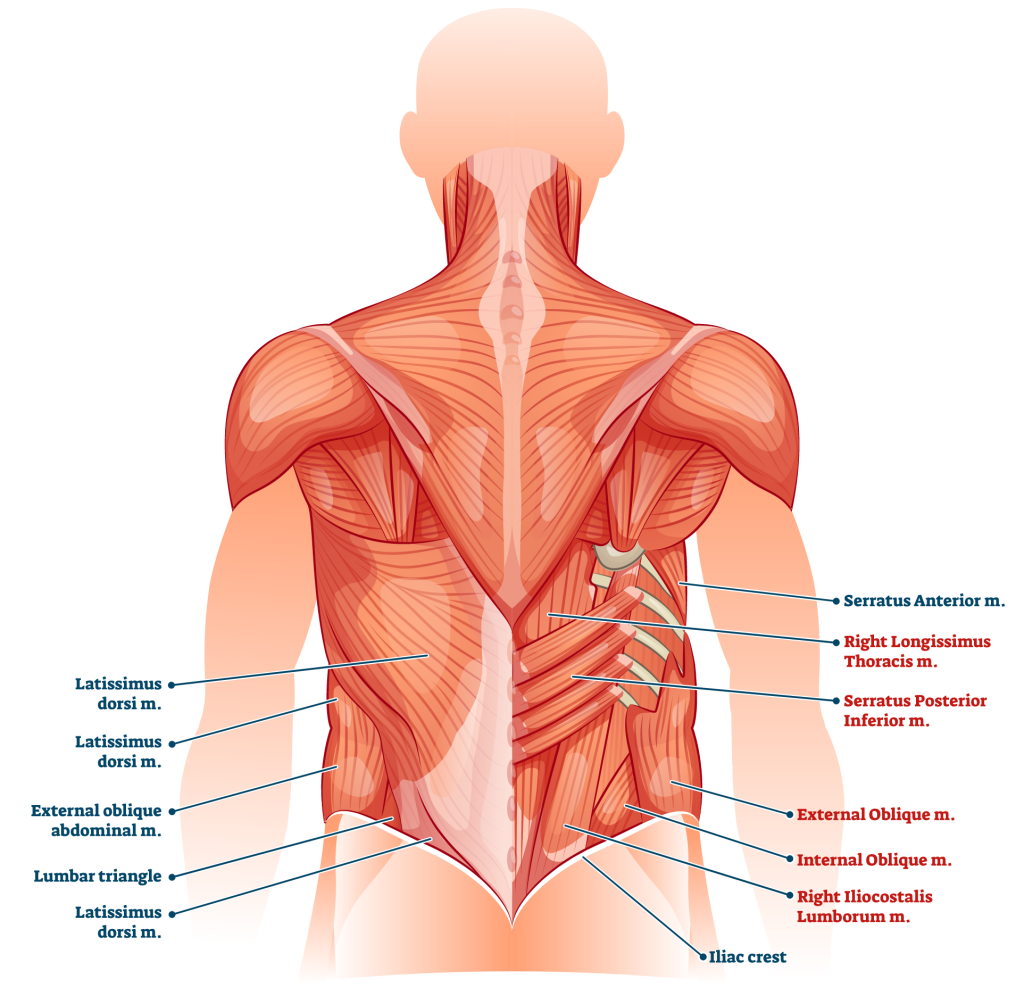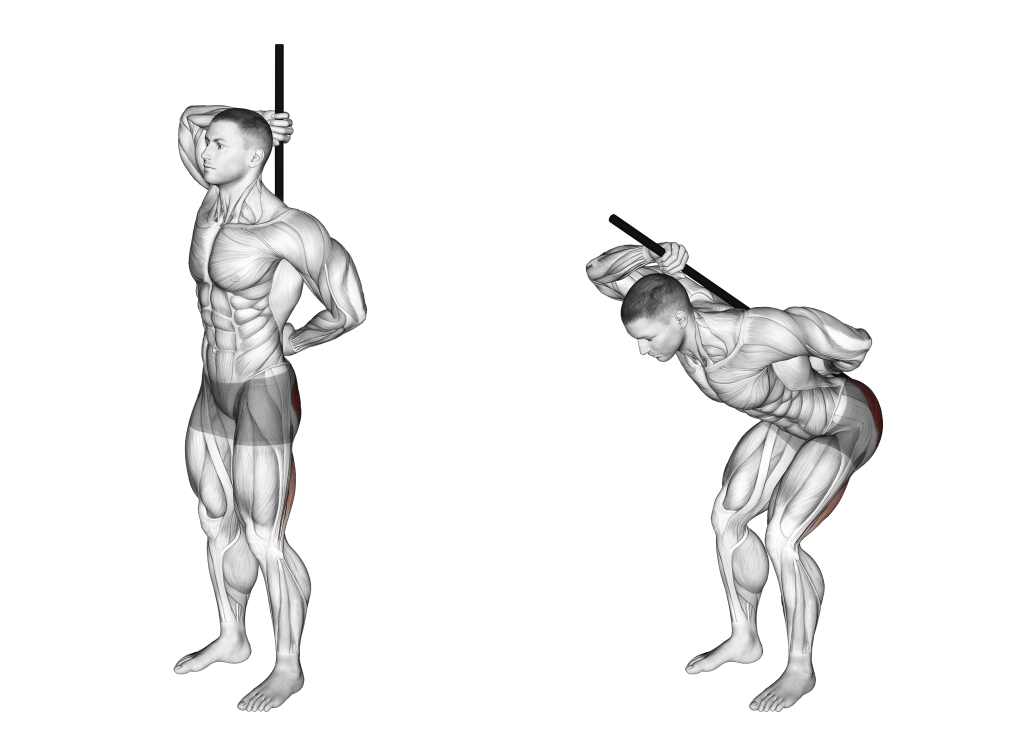Barbell Row Lower Back Pain: Common Reasons Explained
Injuries of the lower back are among the most serious yet most commonly seen with weightlifting athletes.
Though many of these cases are caused by exercises like the squat and the deadlift, the barbell row is also responsible for a small percentage of lower back injuries developed in the gym - of which are primarily caused by poor lift execution.
Lower back pain during or after a set of barbell rows can be indicative of injuries from poor form, or otherwise issues in other areas of your training program, such as overtraining or insufficient lower back recovery time.
What is the Barbell Row?
In technical terms, the barbell row is a closed chain free weight compound movement, usually performed at a moderate to high level of intensity so as to train the muscles of the back and biceps.

The barbell row is usually featured in strength-focused or bodybuilding workout plans as the main source of training stimulus in a back day workout, especially when heavier movements like the deadlift are not included.
How to Perform the Barbell Row
To begin performing a repetition of the barbell row, the exerciser will stand behind a loaded barbell with the feet set a cbomfortable distance apart and the lower back kept at a neutral curvature.
Then, gripping the barbell with the hands slightly less than shoulder-width apart, the exerciser will draw the barbell from the floor towards their hips, keeping the chest pushed forwards and upwards.

From this position, they will allow their arms to hang beneath the torso before pulling the barbell towards their sternum, drawing the elbows behind the back and keeping the muscles of the core rigid and contracted.
Once the barbell has come close to making contact with the torso, the exerciser will then slowly release their arms back to the hanging position, thereby completing a repetition of the barbell row.
Anatomy of the Lower Back in Relation to Barbell Rows
The lower back is a rather complex part of the body made of numerous structures, both soft and osseous in construction.

In particular, it is centered around the lumbar portion of the spinal column, with muscles like the obliques and erector spinae acting as protective layer around this portion of the spine, as well as the main source of force with which it may be moved.
In Relation to the Barbell Row
As such, the majority of injuries from barbell rows will take place along these soft tissues, whether due to being pulled into a disadvantageous position (such as with bad form) or simple physiological conditions (such as with overtraining or the effects of aging).
More uncommon but nonetheless serious injuries may even affect the lumbar spine itself, leading to slipped or otherwise compressed discs that will require lengthy recovery periods and even surgery to correct.
During a repetition of the conventional barbell row, the lower back is not meant to move in any dynamic fashion.
Rather, it will remain in place through isometric contraction of the core and the aforementioned muscle groups, meaning that the majority of mechanical stress taking place is from pressure, rather than repetitive strain or sudden shear force.
This type of mechanical stress leads to a lower risk of injury, but nonetheless will result in damage if induced too frequently, or if the lower back is in a disadvantageous position that cannot withstand the resistance of the exercise.
To avoid such occurrences, it is important to perform barbell rows with perfect form adherence, and to follow the correct training program.
Possible Lower Back Injuries Caused by Barbell Rows
While pain is not always indicative of any serious injury, it is nonetheless a symptom that is among the first to be noticed when an injury has indeed occurred - especially in regards to the lower back, which supports the entire torso during day to day life.
The following are a list of possible injuries that may be caused by improper performance of barbell rows. Keep in mind, however, that going by symptoms alone is rarely an effective method of diagnosis.
Instead, it is far better to seek out the advice of a medical professional if you suspect that you have sustained an injury.
Strains, Sprains, and Tears of the Various Lower Back Muscles
Soft tissue injuries of the lower back are far more common than those to the lumbar spine, as it is these muscles that endure the greatest amount of mechanical stress during a barbell row.
During each repetition of the barbell row, the lower back essentially acts as a “bridge”, keeping the torso rigidly in place despite a complete lack of support from the lower body due to the bend of the waist.
While this isn’t quite the correct way of performing a row, it is how the majority of lifters do it.
This can draw the muscles of the lower back into an anatomically disadvantageous position, especially if excessive lower back rounding takes place.
Injuries of this nature are most likely to be tears or sprains of muscles like the internal obliques and the lumbar triangle muscle - and can often accompany the pain with feelings of instability, numbness or a loss of range of motion when bending over and turning at the waist.
Hernitations, Slips, and Other Injuries of the Spinal Column
Far more serious are injuries to the lumbar or thoracic portion of the spine, though they are fortunately far less common.
Damage to the spinal column will often present as one or two of the individual discs succumbing to the pressure and shear force of the barbell row, usually as a result of poor form placing the spine at a less than optimal curvature, thereby causing said disc to bear more mechanical stress than it was designed to.
Injuries to the spinal column will often be readily noticeable, and present unique symptoms such as large scale numbing, weakness on one side of the body, the symptoms of a pinched nerve and severe pain.
Consult a physician immediately if you suspect you have injured your spine.
Common Form Mistakes of the Barbell Row
1. Hinging Without Core Contraction
While hinging at the waist is a major form cue for proper barbell row execution, some exercisers who are unfamiliar with free weight compound movements may do so without the prerequisite contraction of their core muscles - leaving to poor lower back curvature and a greater risk of hernias.

To correct this, practicing proper core contraction and summarily also improving the mind-muscle connection with said core is the best route to follow.
Furthermore, this may be taken a step further by learning to perform a valsalva maneuver - improving intra-abdominal pressure and greatly reducing the relative risk of injury.
2. Failing to Use Lower Posterior Chain
Despite the fact that the core must be contracted throughout the entire barbell row movement, the muscles therein are not meant to bear the entire weight of the upper body.
Instead, the muscles of the hamstrings and glutes should also aid in this task through isometric contraction.
This factor is often ignored by the majority of lifters, and is the reason for the poor reputation of the barbell row, as not many lifters realize it is in fact possible to utilize the lower posterior chain to support the torso.
3. Poor Back Curvature
Even if the lifter is performing the barbell row with proper core contraction and a distribution of force to the lower posterior chain, there is still the factor of the back's curvature itself.
When viewed from the side, it can be seen that the spinal column features an “S-like” bend around the thoracic and lumbar portion - an anatomical feature that aids in vertical stress translation and helps reduce the risk of injury when exercising.
However, if the lifter is unintentionally allowing their lower back to curve in a manner otherwise known as “catbacking”, this natural spinal arch can be disrupted, leading to a disadvantageous position for the lower back and a greatly increased risk of injury.
To avoid this, the lifter should strive to maintain an upright chest, as well as to keep the lower portion of the spine at a neutral angle by avoiding any sort of rounding whatsoever.
Such neutrality is, of course, supported by the aforementioned proper core muscle contraction and posterior chain recruitment as well.
4. Collapsing Shoulders and Chest
As was touched upon earlier, allowing the chest and shoulders to rotate inwards or otherwise “collapse” will not only affect the alignment of the spinal column, but could also lead to other injuries such as rotator cuff damage and neck pain in more extreme cases.
During the barbell row, pushing the chest outwards and forwards while simultaneously retracting the scapula somewhat will greatly aid in performing the exercise safely.
This is perfectly in-line with proper elbow form adherence as well, as a flaring scapula or drooping chest will make pulling through the elbows rather difficult, if not impossible.
If unsure of whether your shoulders are in the correct position or not, asking a more experienced friend to observe your barbell row repetition from the side can help you ascertain whether you are following proper form or not.
Common Non-Form Mistakes Relating to the Barbell Row and Back Pain
Though the execution of the barbell row itself is the most likely cause behind lower back pain, it could also be several non-form related factors that are made more obvious by the barbell row instead.
Unfortunately, unlike form issues, these factors may be somewhat more difficult to correct or are otherwise unavoidable.
In such circumstances, it may be better to switch out the barbell row with a substitute exercise of equal effectiveness.
Overtraining With Multiple Lower Back Movements
Much like other muscles located throughout the body, excessive volume and training frequency placed on the many smaller muscles of the lower back can easily result in pain and injuries.
While exercises involving isometric contraction are less likely to result in irritation or injury, dynamic movements of the lower back such as good mornings or deadlifts can cause tears and sprains to occur - meaning that it is best to take a day or two between workouts involving rows and deadlifts.
Furthermore, performing the barbell row to excessive volume can also lead to the lower back becoming sore.
To avoid entering a state of overtraining, it is important to follow a sound training program that is developed with recovery and total workout volume in mind - especially in the case of novice exercisers who have yet to condition their connective tissues properly.
Poor Posture Out of the Gym
Though seemingly unrelated, individuals who have poor posture outside of the gym may already have weakened or irritated lower back muscles - leading to the problem becoming compounded after performance of exercises like the barbell row.
While the issues caused by poor posture are vast, improving one’s own posture in a conscious manner is usually enough to fix these physiological issues - and may be further helped through careful targeted isolation exercise of the lower back musculature.
Age, Previous Injuries, and Other Lifestyle Factors Compounded by Barbell Rows
Just as how poor posture outside of the gym can trigger pain after exercises like the barbell row, so too can other factors relating to the exerciser’s lifestyle.
Whether due to the effects of aging, a history of lower back injury or even regularly participating in activities that place stress on the lower back - performing heavy movements like the barbell row can further worsen the pain felt from these lifestyle factors.
While most are correctable in some way, it may be best if some individuals avoid barbell rows entirely.
Fortunately, this does not mean that they need to stop training their back muscles, as quite a number of substitute exercises can help retain the training stimulus that would be otherwise provided by barbell rows - especially with movements like chest-supported rows, inverted rows or pull-ups.
When to See a Doctor for Barbell Row Lower Back Pain
In the event that your lower back pain is accompanied by other symptoms like tingling, numbness, a loss of range of motion or if other parts of your body are experiencing the aforementioned symptoms - it is absolutely the time to contact your physician.
Injuries of the lower back are particularly dangerous because of the risk of paralysis, and the fact that recovering from serious injuries to the spine will take extensive and often invasive medical procedures.
To avoid the injury from worsening, it is important to seek medical treatment as soon as possible.
While it is unlikely that you have indeed seriously injured your lower back, there is nonetheless a moderate risk, and it is best to err on the safe side when concerning injuries to the spine and back.
In Conclusion
Remember to take some time off from lower back training of any sort prior to returning to your workouts, and to return to training in a slow and careful manner so as to allow your back to recover properly.
Otherwise, it’s a good idea to get checked by a doctor, even if the pain is not intense. Other issues like sciatica or hernias may not always present symptoms of intense pain, but are nonetheless developed in much the same way as lower back injuries.
References
1. Fenwick CM, Brown SH, McGill SM. Comparison of different rowing exercises: trunk muscle activation and lumbar spine motion, load, and stiffness. J Strength Cond Res. 2009 Mar;23(2):350-8. doi: 10.1519/JSC.0b013e3181942019. PMID: 19197209.
2. Tjøsvoll, S.O., Mork, P.J., Iversen, V.M. et al. Periodized resistance training for persistent non-specific low back pain: a mixed methods feasibility study. BMC Sports Sci Med Rehabil 12, 30 (2020). https://doi.org/10.1186/s13102-020-00181-0
